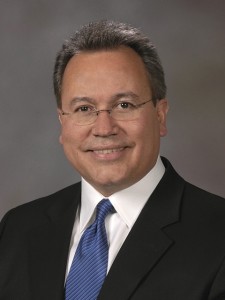 HP CIO Ramon Baez talks about HP’s vision for cloud computing and big data, and how HP can help its customers make the most of these new technologies.
HP CIO Ramon Baez talks about HP’s vision for cloud computing and big data, and how HP can help its customers make the most of these new technologies.
You’ve mentioned that there is a gap between the CIO’s optimism about what can be done with big data and the cloud, and the systems they actually have in place. Why do you think there is this disparity?
I think it happens for various reasons. The shifts are occurring so rapidly that talent isn’t keeping up with the changes. I know when I was delivering my first software-as-a-service years ago, we didn’t have people who were cloud integrators. They did on-premise integration, and that is very different from doing cloud integrations. Cloud is a very different mindset. It’s not just about the technology but the leadership of the organisation. Do they have the people with the right attitude and aptitude to get things done?
Many people don’t have a vision of how they want to use the cloud. About 37 percent [of managers surveyed by HP] did not have a true vision of how cloud can be used, whether as software-as-a-service, infrastructure-as-a-service or platform-as-a-service. Take a look at big data, which I guarantee is not hype. But the problem is, the technical people are developing these really great tools, but users aren’t educated about them.
Our job at HP is to articulate the value that we got using these technologies. We believe you can get the same benefit from doing these things as well.
How is the cloud changing businesses?
The cloud has opened up business leaders to be much more IT-savvy. They have a better idea of what they need than ever before. When we’d deploy on-premise solutions, we’d have to configure the heck out of them, to get everyone’s requests in, because they knew if they didn’t get them into the first version, they wouldn’t see those [features] for years. Now, with the cloud, when they submit their changes, they can be added rather rapidly.
Platform-as-a-service is increasing the velocity in how we are doing business. Previously, it’d take two or three weeks to provision a server. Now we can provision a whole stack for our developers within hours. It used to take a week to deploy a database. Now it takes five minutes.
Are you finding individual business units making an end run around the IT department to directly get these clouds provisioned?
Every company has those savvy superusers, if you will. Or shadow organisations. I’ve said innovation just doesn’t reside in IT – it’s all over the map. I think it’s important for IT to work with business. It relieves some of the tension.
When you have leaders who truly understand the business, I think it shapes the way we deal with people who want to be that shadow organisation. They may say, “Hey, I have to go get my own solution” and then they find they have to work with IT because IT has to do the back-end integration. They don’t know how to do that, and that’s when it falls apart.
How will the role of IT administrators change with the cloud?
What will happen, as time goes on, is a lot of these people will become service brokers. In the old days, the people who would deal with internal clients were called account managers. They will work with a colleague within the business and look at a service to buy.
When I meet with a CIO, I usually present my organisation chart. This is how I’m structured; I have a few things that are very centralised, like the IT infrastructure, security, development services. But within my business units, I have more of a vertical view.
So what can companies do to get started on using big data?
What we’re seeing is that it doesn’t happen overnight. You have to build up the stack. You have to understand the tools. You have to understand what the data is telling you. You have no idea what question to ask until you get all the information.
How do you teach people to use big data? We have people in the industry who have used reports forever. People are used to Excel-type reports of columns and rows. How do we get them weaned off of those types of reports and more towards the analytics and dashboards?
You have to go through this whole process of management change. It’s more of a culture issue than a technology issue. But big data is alive and well, and there are so many tools that can give you those types of insights.
HP has offered cloud services for years, but in April the company announced it was unifying its services under the HP Helion nameplate. Was there a single moment at HP when executives decided to make cloud a major priority for the company?
I think what happened was, when the leadership had to make a decision about the HP cloud, we asked: would it be proprietary, or would it be OpenStack? That was our eureka moment. That really changed our view of the cloud, how it could become something that many companies can go with. What we’re finding is that many CIOs do want that openness. They’re at HP for now, but if they want to move later they want to be able to do that easily.
When we were all talking about this, Martin Fink, our chief technology officer, asked if I was seeing [desire for openness] out there as well, and I did. That’s when we all agreed that this is the direction we’d take.





